Is it Cooked or Raw?
Understanding Beef Jerky Preparation Methods
Posted at 1700 • 24 June • Robert Hall • Beef Jerky Preparation
Here's the truth - Beef Jerky is fully cooked. Beef Jerky is not raw, it's actually dried (dehydrated). Here's a few ways to prepare it.
Packaged beef jerky has been cooked in one of a few methods:
Dehydration: Low heat and airflow is applied for 8-12 hours (depending on many factors) until the water is removed from the beef. This air-drying process concentrates the beef's flavour and kills any bacteria. Dehydrated beef jerky is safe to eat.
Smoking: Similar to air-drying, smoking jerky at a low temperature for many hours creates a safe to eat beef jerky, with a smokey flavour. Often smoked jerky is more tender than air-dried.
Oven: Jerky can be oven dried using a low temp and the fan-forced setting. This mimics a dehydrator.
We dry beef for a few reasons:
- Removing the moisture creates a shelf stable food. This means the beef won't spoil and can last over 12 months wthout refrigeration.
- Drying creates a very high protien snack, with over 50g protien per 100g
- Drying also concentrates the flavour of the beef and any marinades we add. For meat lovers, beef jerky is a phenominal snack
Before drying, beef jerky is cut into thin strips and marinades for a few days for maximum flavour. The ingredients used are often chosen to help enahnce the shelf life of beef jerky - like salt, vinegar and soy sauce.
In my opinion, beef jerky is one of the oldest foods known to humans. If we consider jerky to be dried meat, then you'll understand why I think this. Being able to store or preserve meat for later meals means you aren't catching an animal every time you need to eat.
Humans worked out you can dry meat to make it safe to eat later and prevent spoilage. Beef Jerky has come a loooong way since then.
There's a million different things you could snack on, but a premium beef snack like Beef Chief Jerky is quickly becoming as popular as chips, for those looking for a high protein snack. There's a lot of beef jerky to choose from, and more brands are starting every day.
One important question to understand is:
Is beef jerky cooked or raw?
Beef jerky is a dried beef snack food with a rich history. It's made by marinating and preserving meat through a drying process, resulting in a tasty and long-lasting treat.
As I stated earlier, I think it might be the oldest snack food humans have made. Most countries have their own version of jerky. Here are five different types of jerky around the world:
- Kilishi (Nigeria): Thinly sliced meat coated with a paste of ground peanuts, spices, and sometimes sugar, then sun-dried.
- Hákarl (Iceland): Fermented and dried shark meat, traditionally hung outside to dry in the cold air.
- Biltong (South Africa): Cured and air-dried meat, often flavored with vinegar, salt, coriander, and pepper.
- Charqui (South America): Salted and dried meat, originally made by indigenous peoples and later adopted by Spanish settlers.
- Pemmican (North America): Traditionally made by Native Americans using dried meat, fat, and berries.
Traditionally, jerky was made by hanging strips of meat over a fire or in the sun to dry. This method not only preserved the meat but also added a smokey flavor.
For enthusiastic chewers

Smokey Chilli Droewors

Garlic Beef Jerky
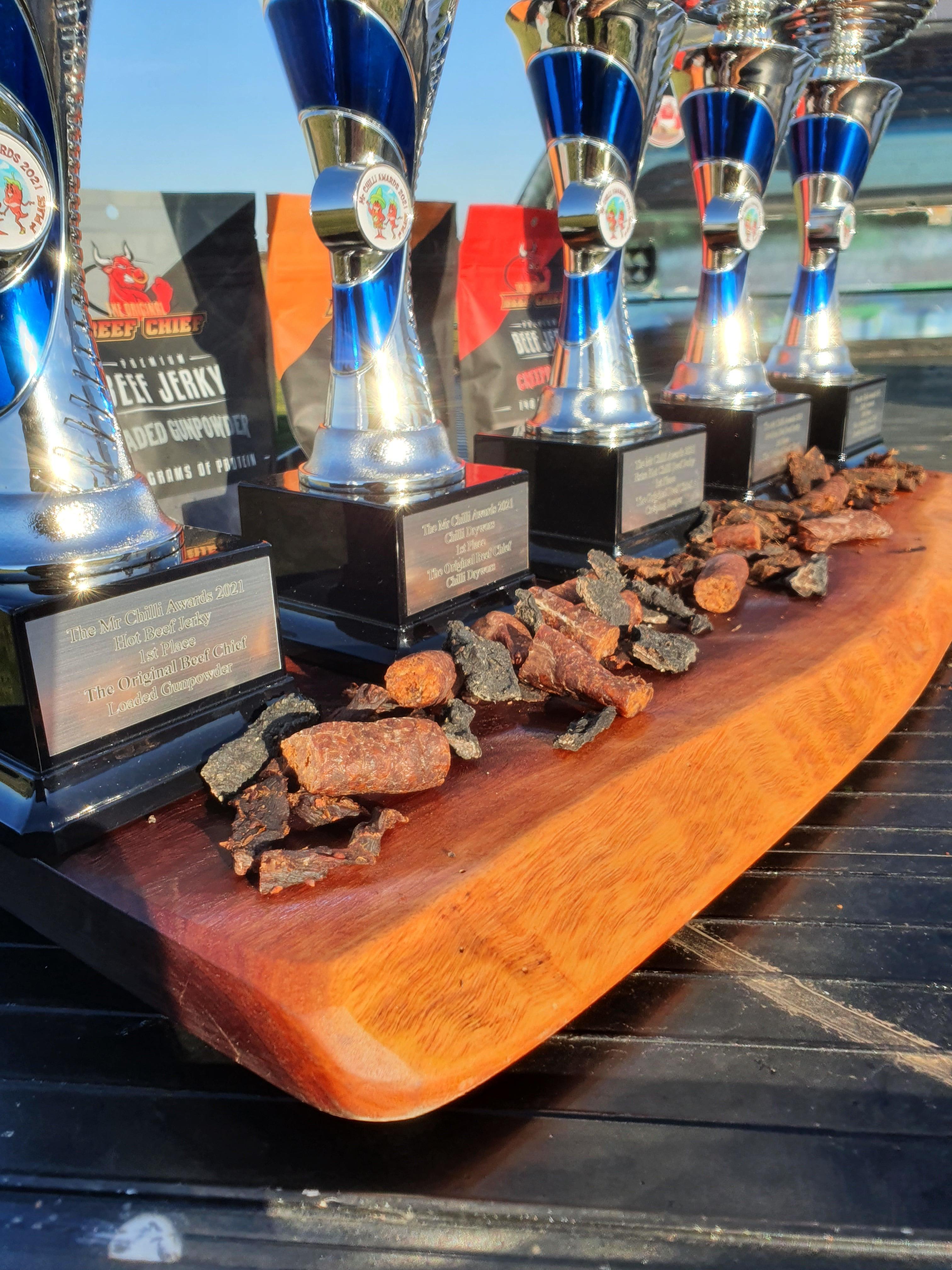
Spicy Beef Jerky Variety Pack

Ragin Cajun Beef Jerky
Drying vs. Cooking
Drying and cooking are two distinct methods used to prepare beef jerky.
One applies heat directly to the product, one leans more on airflow removing water - evaporation.
Drying: Drying is a method to preserve meat by removing moisture. Bacteria can only survive in moist environments, so removing water from beef is a crucial step in making jerky. This process results in a safe-to-eat product. However, it also leads to significant weight loss; for example, drying 1kg of topside beef yields only 400g of beef jerky, which is a 60% loss. When warm air flows over and around the marinaded beef, it pulls the water out of the beef slices. While drying the beef shrinks and toughens until you get your desired texture
Cooking: Cooking involves applying heat to food to make it safe to eat. Hot cooked jerky can kill bacteria without losing as much weight, which is why softer "wet" jerky brands can sell their products more cheaply. Essentially, you're paying for more water content in these products.
A full breakdown on making homemade jerky can be found here.
...which is why softer "wet" jerky brands can sell their products more cheaply. Essentially, you're paying for more water content in these products.
Robert Hall
Step-by-Step Process of Making Beef Jerky
- Meat Selection: We use only premium Aussie grass-raised beef, specifically topside, ensuring a consistent product every time. Although topside is a more expensive cut, the quality difference is worth it.
- Marinating: Our jerky is marinated for 2 days for maximum flavor penetration. We use a mix of wet and dry flavorings depending what we are making, which can affect the final product's toughness. Flavor is paramount for us.
-
Drying Process:
-
Cold Smoking: Involves smoking the meat at temperatures below 30°C (86°F). This method infuses a smokey flavor without cooking the meat, keeping it tender.
-
Hot Smoking: Uses temperatures between 52°C to 80°C (126°F to 176°F). This not only adds flavor but also partially cooks the meat, resulting in a softer texture.
- Combination Smoking: Some techniques involve initial cold smoking followed by hot smoking to balance flavor infusion and texture.
-
-
Traditional Air-Drying Methods: This includes methods like drying over fire and hanging the meat in a ventilated space.
-
Modern Dehydrators: These units blow warm/hot air through a chamber filled with your beef, functioning like a small fan-forced oven.
- Cooking vs. Drying:
- Most companies dry at around 70 degrees Celsius, completing the process in 12 hours. We dry at 38 degrees Celsius for much longer, 2-3 days, preserving more nutrients and preventing protein denaturation, resulting in higher quality jerky.
The key to jerky is removing moisture, not necessarily cooking it, and this is what we do best.
Common Misconceptions
One common misconception is that jerky must be fully cooked to be safe. While you can cook a steak to be tender and juicy, drying jerky is analogous in terms of safety. You can't cut a piece of jerky in half to test if it's "cooked" before purchase, which can cause hesitation. However, millions of people enjoying jerky around the world can attest that it’s generally safe to eat.
Drying jerky to our standards ensures it is safe to eat. Buying from reputable brands guarantees food safety. Jerky might put some people off because it’s dried, not cooked, giving a raw perception. However, the jerky industry is tightly regulated, with food safety as a priority for professional companies. If concerned, opt for drier jerky instead of wetter varieties.
Another concern is that drying is unsafe because bacteria ferment during the drying process. This is a misconception. Proper drying methods, such as those used by Beef Chief Jerky, reduce moisture to levels where bacteria cannot thrive. The combination of controlled drying temperatures and marinating with vinegar, salt and spices inhibits bacterial growth, ensuring our product is safe to eat. Reputable brands adhere to strict food safety regulations to ensure their jerky is not only delicious but also safe.
The ingredients chosen for marinating also play a crucial role in reducing bacterial growth. Salt, vinegar, and certain spices not only enhance flavor but also have natural antibacterial properties. Salt draws out moisture, creating an inhospitable environment for bacteria. Vinegar's acidity further inhibits bacterial growth. Together, these ingredients ensure that the jerky remains safe to eat throughout the drying process.
The key to jerky is removing moisture, not necessarily cooking it, and this is what we do best.
Robert Hall
At Beef Chief Jerky, we pride ourselves on our meticulous drying process. We use a cooler, longer drying method at 38 degrees Celsius over 2-3 days, preserving nutrients and enhancing flavor.
Our jerky boasts a variety of unique flavors made from premium Aussie grass-raised beef. Each piece is marinated for 2 days, using a blend of wet and dry ingredients, some chosen for their anti-microbial properties, including salt, vinegar, and coriander(for our biltong range), to ensure maximum flavor and safety.
We adhere to strict quality control measures to ensure every batch of jerky and biltong meets our high standards. Our commitment to food safety and quality means you get a delicious, nutritious, and safe product every time.
Beef jerky is a time-tested, nutritious snack made by drying premium cuts of beef. Our unique drying process, high-quality ingredients, and rigorous quality control set Beef Chief Jerky apart.
Experience the intense, concentrated flavors and high nutritional value of our jerky for yourself.
View our range, sign up for our newsletter, and follow us on social media to stay updated on our latest products and promotions.
Try Beef Chief Jerky today and taste the difference!
Ready to try some out?
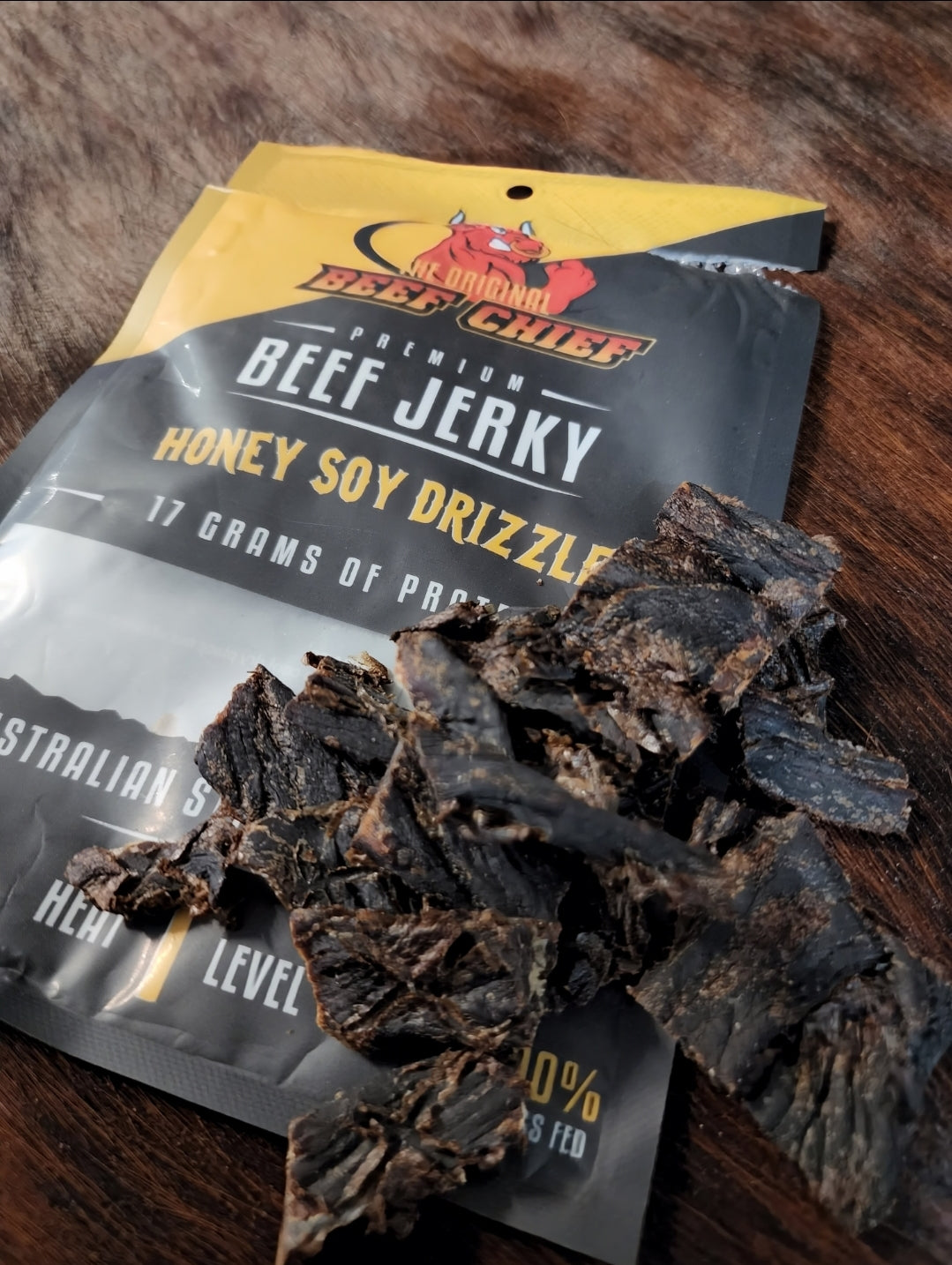
Honey Soy Drizzle Beef Jerky
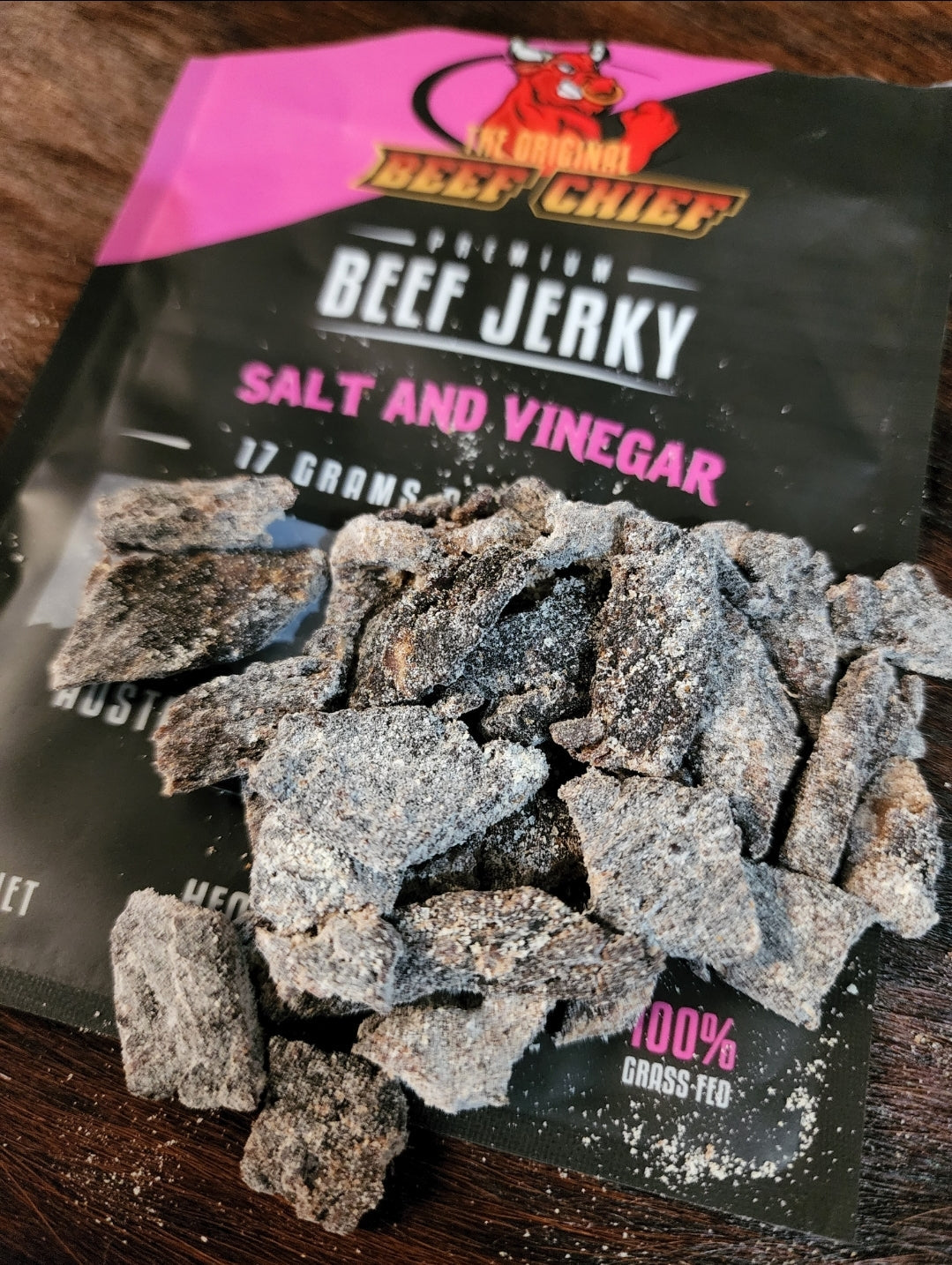
Salt and Vinegar Beef Jerky
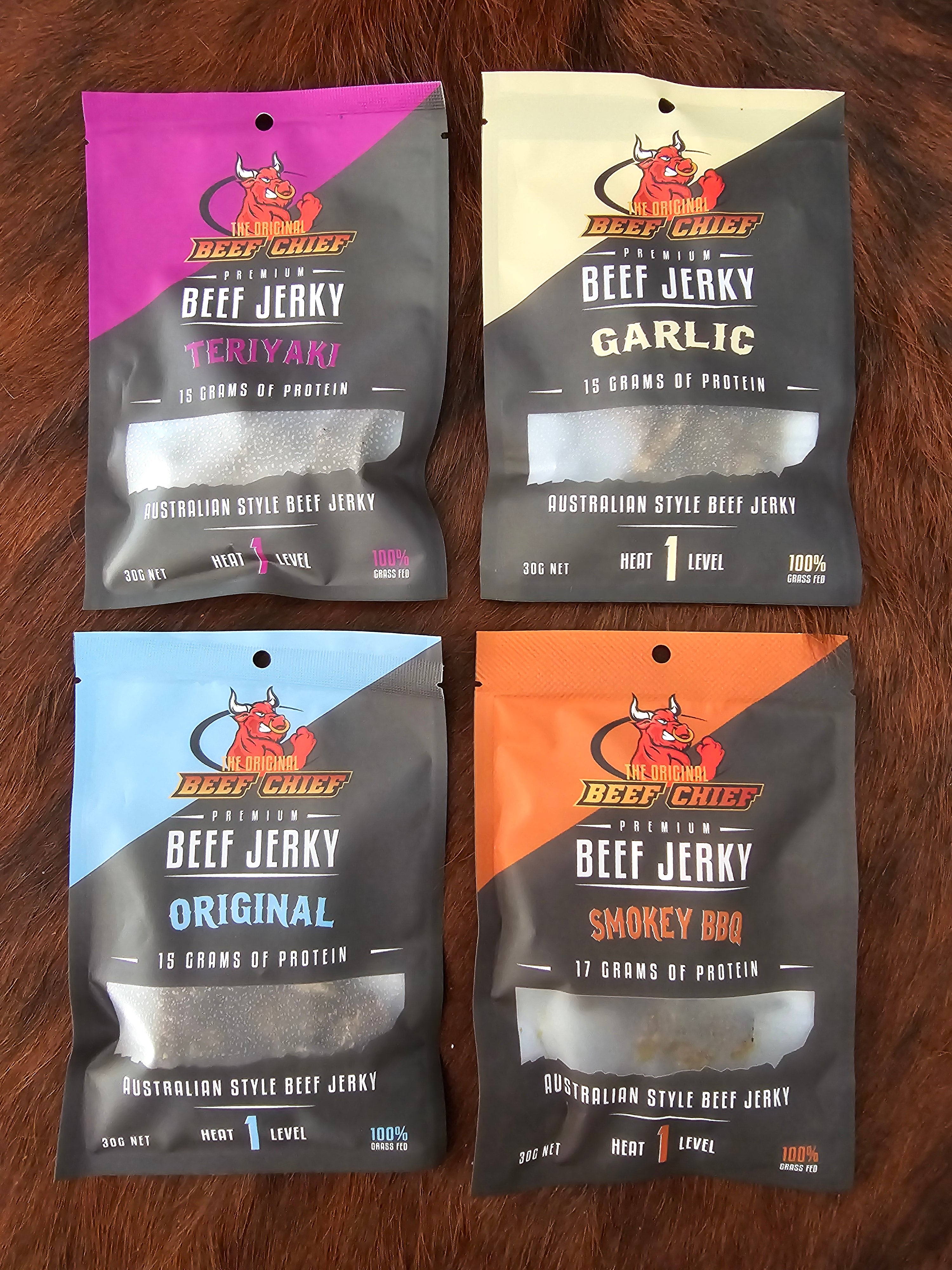
Mild Beef Jerky Variety Pack
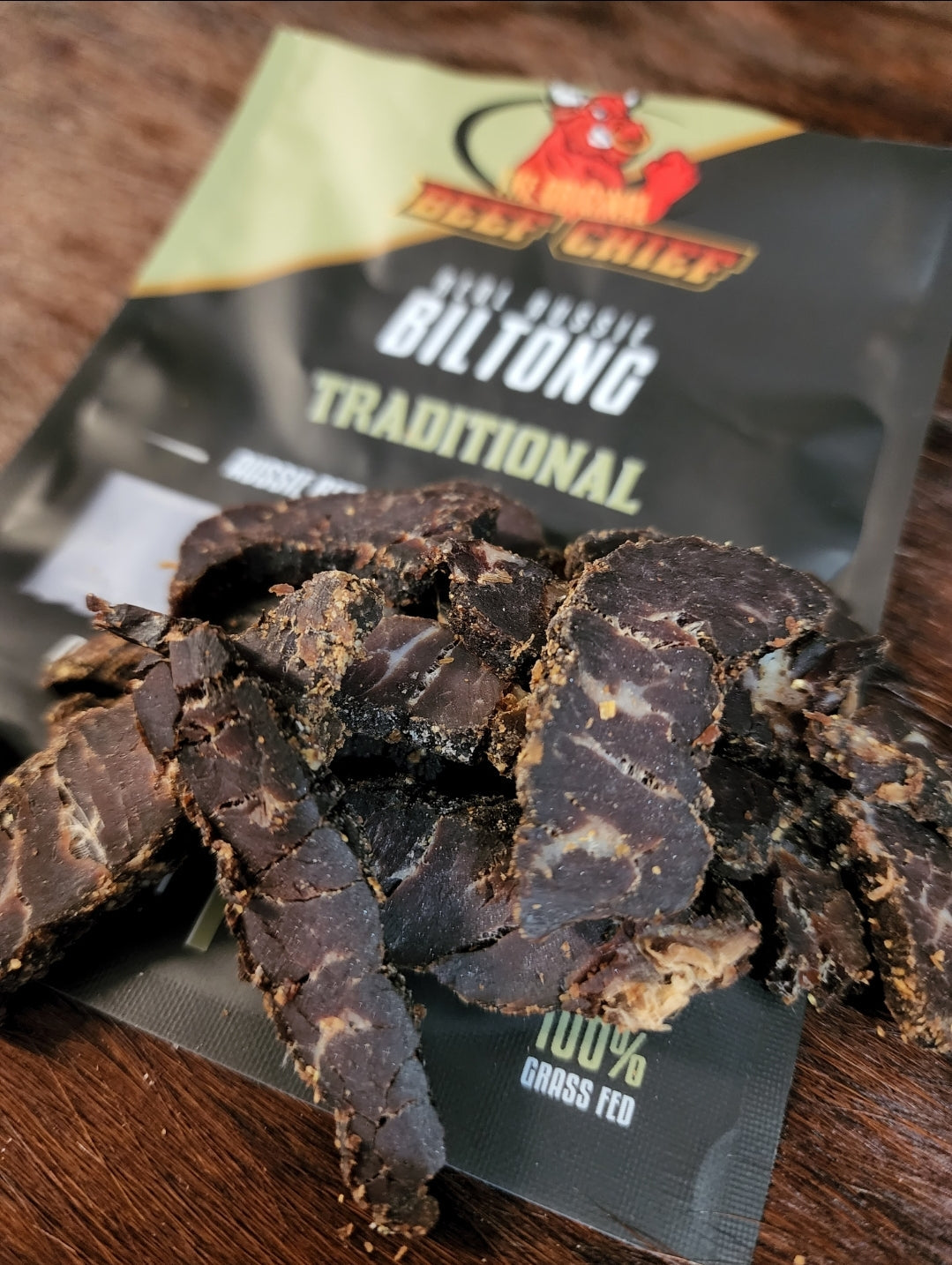

Leave a comment